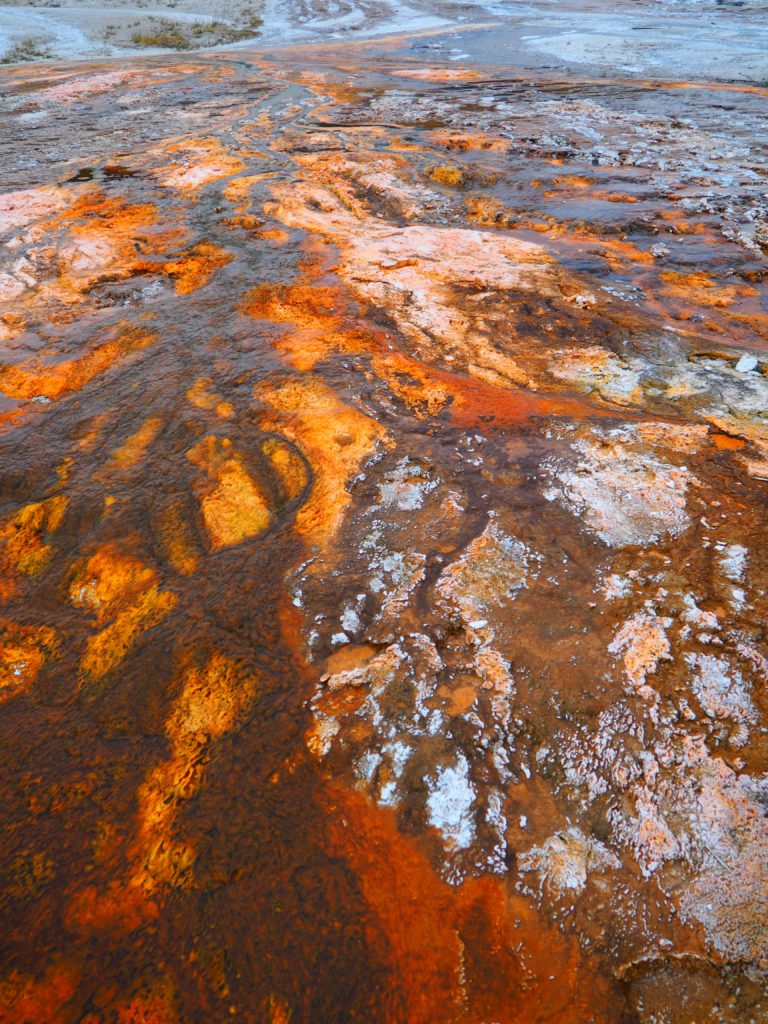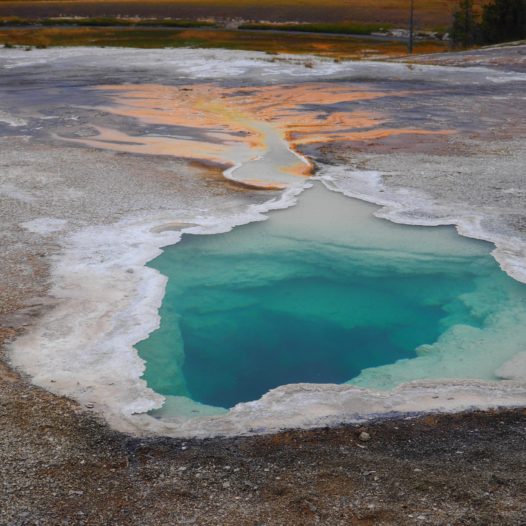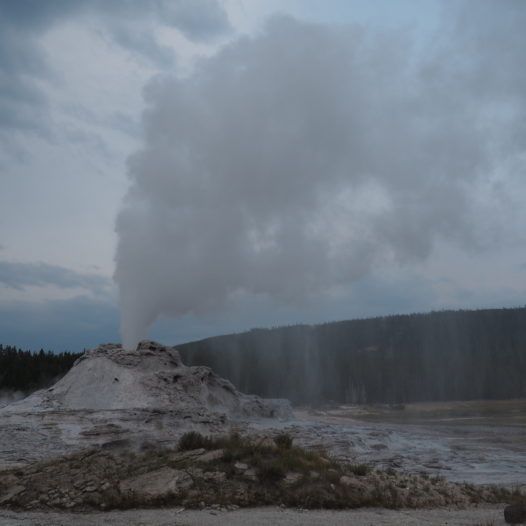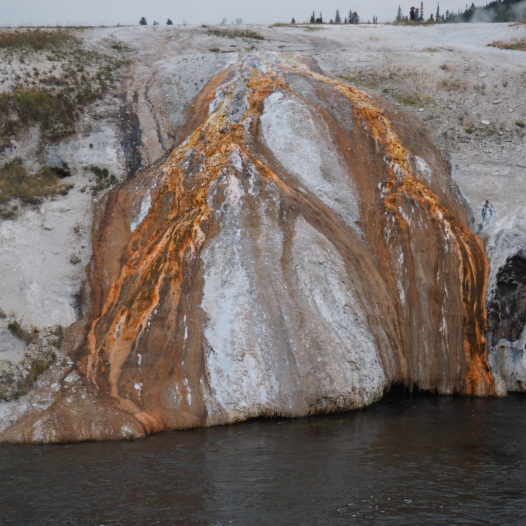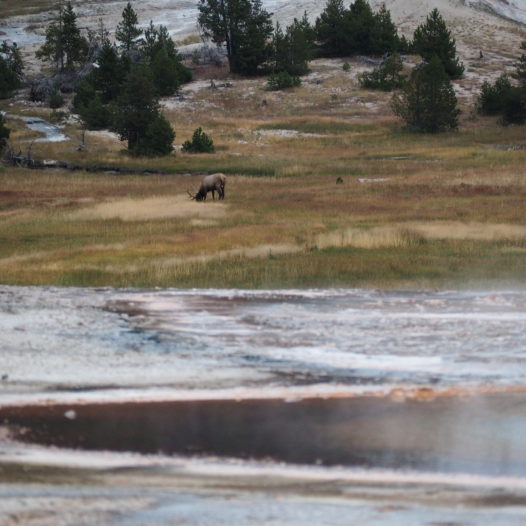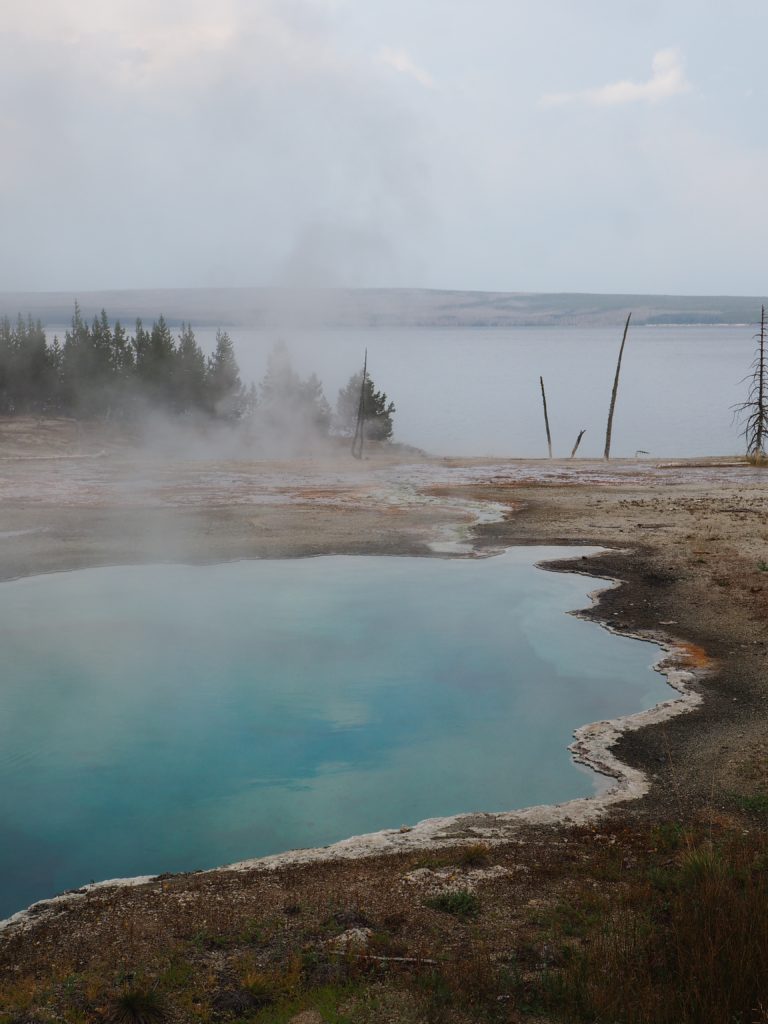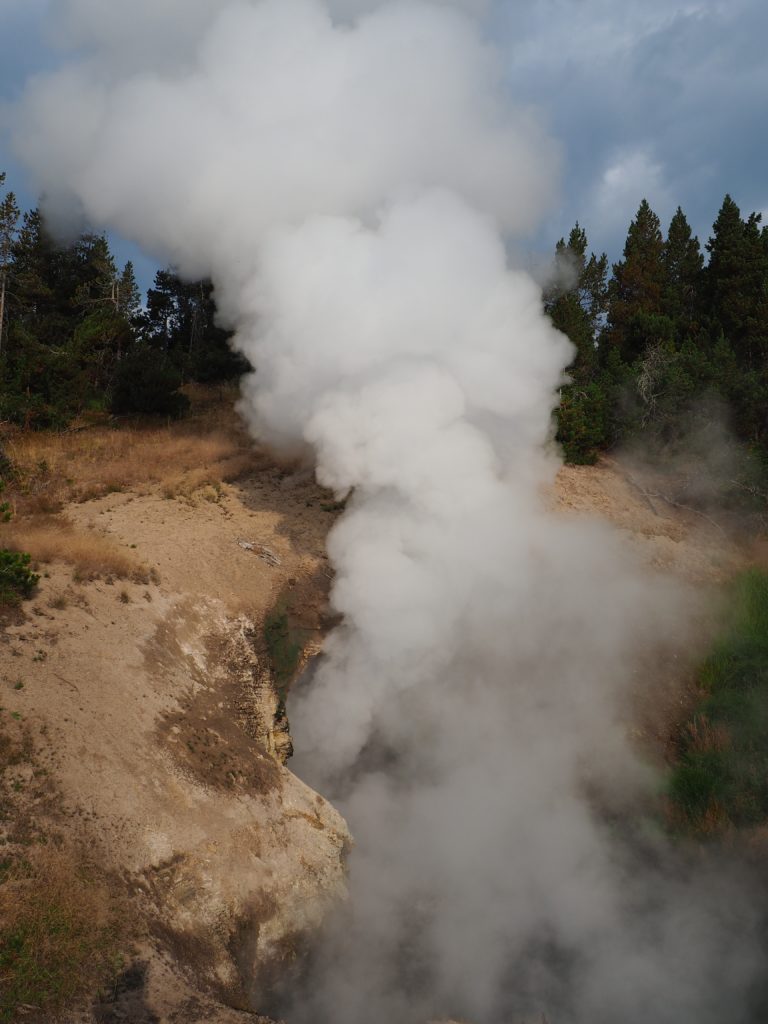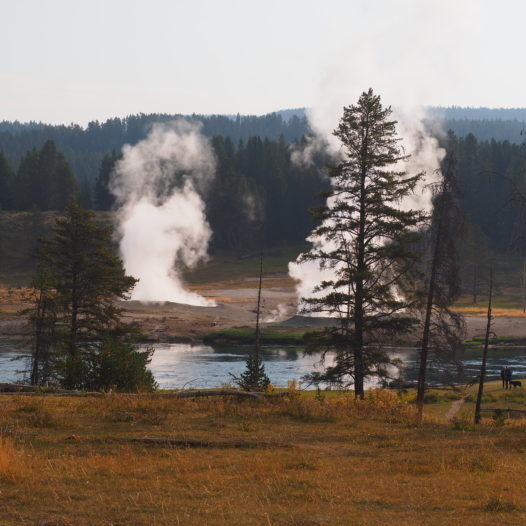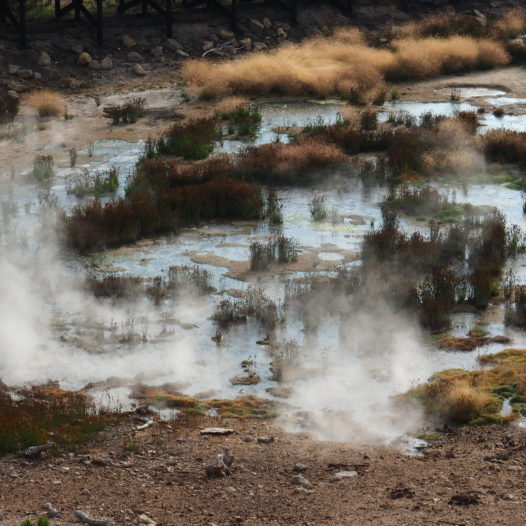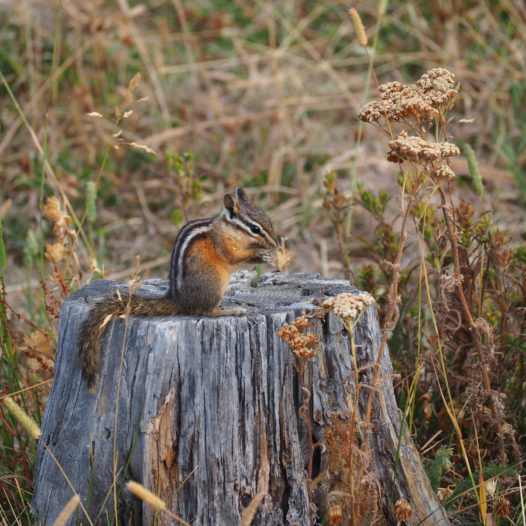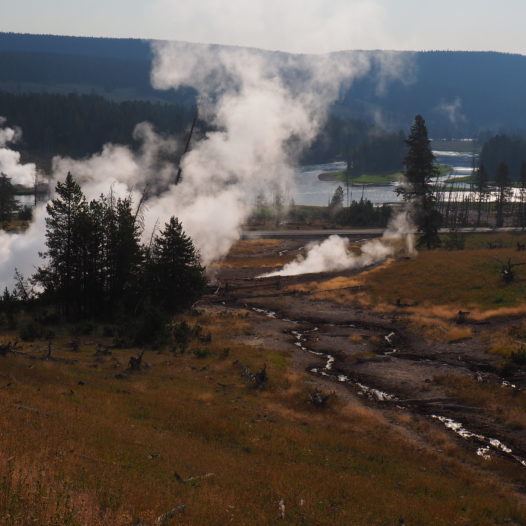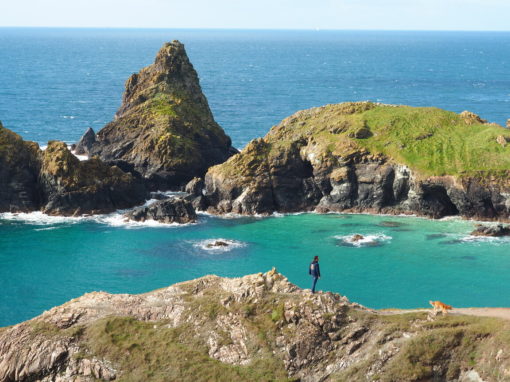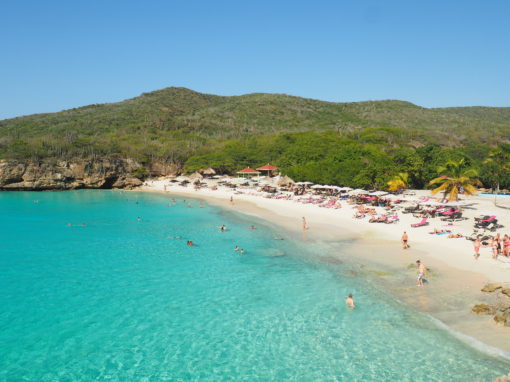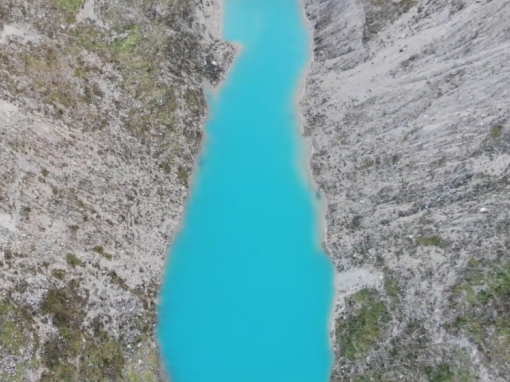“There is frequently heard a loud noise like thunder, which makes the earth tremble”… Explorer William Clark made it pretty clear in his journal some 200 years ago: the lands in the north of Wyoming are quite moody and extraordinary. And to be respected. Sadly for him, Clark’s stories and those of other explorers were mocked and called “mad hallucinations”.
Decades later, when more and more of these strange talks and doubtful tales of wonder came in and were finally verified by a photographer and a painter, the excitement about the area was all around the country. The early explorers weren’t crazy, these lands were extraordinary indeed!
In order to prevent the remarkable place from being exploited, Congress voted in 1872 to turn 2 million acres of land in Wyoming into the world’s first National Park and named it Yellowstone.
Ever since, millions of people have set out to see the thermal features of the park and its wilderness around with their own eyes. As the Yellowstone area sits atop a huge volcano caldera, its heat forces boiling water and steam towards the surface – resulting in geysers, hot springs, fumarole (steam vents) and mudpots.
There are so many spots where you can see (and smell!) all of these weird elements. You need at least a day to appreciate them all. From north to south.. to north – these were my favourite stops along the Yellowstone loop!
Mammoth Hot Springs
The impressive limestone area of Mammoth Hot Springs is huge. I could in fact make a separate article about it to tell you what to see. But in general I’d advise you just to go there, pick up one of those leaflets for a dollar and just go with the flow.
Take at least 1,5 to 2 hours for a full and non-rushed visit.
Most of these hot waters are flowing through ‘terraces’, structures that were created over the years by ancient limestone deposits and water rich in calcium and sulphur. The outlook of these terraces changes constantly. So it may be that the springs look quite different during a next visit. This is a natural process; new heat escapes may pop up and other may die out.
The Mammoth hot springs can be divided into two sides: the upper and lower part. The lower part can only be reached by foot. So park your car and jump out for a little stroll on the boardwalks. The upper part is a one-way drive (2 miles / 3.2 km) with several pullouts along hot springs and traventine formations. Stop whenever you think it’s gonna be interesting. Expect orange, green and creamy colours in the springs.
Roaring Mountain
Okay, this honestly isn’t the most interesting stop if you consider the rest, but it might be fun to get out during the drive between Mammoth Hot Springs to Norris Geyser Basin.
The mountain is quite bizarre as it is full of fumaroles – steam vents. Because of that the mountain hisses a bit, which explains the ‘roaring’ part.
Although not so much when we were there hahah! :
Norris Geyser Basin
Another big area with all types of thermal features: geysers, hot springs, mudpots and fumaroles. Fun fact: Norris Geyser Basin is the hottest thermal region in Yellowstone National Park! Below the surface at 1000 ft, scientists measured the highest temperature recorded in the park of 459 degrees fahrenheit / 237 degrees celsius. At the surface of all of that, pools of acidic and super-hot water house living mats of green, orange, pink and very blue microorganisms. The bluer the pools, the warmer they are so I’ve learned.
Stretch your legs and grab your hiking shoes, as there are several trails that lead all around these colourful basins that just needs to be explored. The trails I mean of course, not the pools!!
That said, stay on the trails as you really, really, really don’t want to fall into one of these cooking pots.
Believe it or not, you wouldn’t be the first one.
Artists Paintpots
This won’t be the thermal highlight of your trip and yet, Artists Paintpots is worth a stop. From the parking lots its a small hike to the start of the trailhead, which is a small loops around different types of mud pots with various colours for show. Not sure why, but it’s just hypnotising watching these mud bubbles pop, like watching into a magic potion cooking pan with smelly scents. Your kids will love these for sure too.
On top of the, on the upper parts of the loop you have a nice overview of all the colours and bubbles and a proper vista on the surrounding area too.
Firehole Lake Drive
This fun little drive offers a bit of everything in between. Firehole Lake Drive is a one-way loop (3.3 miles / 5.3 km) between Old Faithful and Madison Junction and on the right side of the road (as seen on the map)
It has a big geyser, a few smaller geysers that erupt frequently and a couple of colourful hot springs. As it’s stretched along a prairie, there’s a big possibility you can spot some wildlife too in between. Elk, bison and coyote all roam these grounds. If you want to see those, bring a visit around sunrise or sunset – always a better time to see the mammals and birds.
Grand Prismatic Spring
For me this was the thermal highlight of Yellowstone. Perhaps it’s the most crowded one too. The parking lot here is pretty small, and gets very congested.
It’s understandable. Everybody wants to see that coloured hot spring, a brightly result of algae living in the water. The rainbow colours are wildly vivid.
There are two ways to see the Grand Prismatic Spring. One is from the northern entrance, which leads along a boardwalk that brings you close to the inner level of the ‘lake’. The other one is at the south of the area and requires a small hike. This trail will bring you to a platform from where you have a nice overview of the area. I liked both, but if you only want to do one, choose the southern hike. Albeit a bit more strenuous, it is better appreciable from a higher elevation.
Old Faithful and around
There’s no way of going to Yellowstone and not seeing Old Faithful. This geyser is – well – old and – indeed – faithful when it comes to timing its eruptions. Every 90 minutes the pressure within the geysers has been build up enough to toss its underground water into the air. First visit the visitor center to see when the next burst is ‘scheduled’. It’s quite accurate.
The ‘waiting area’ around Old Faithful is always crowded in summer and though that doesn’t sound to appealing perhaps, it’s exciting to wait altogether for the geyser to erupt! Although it isn’t the highest, steamy outbreak in Yellowstone – it is a spectacular one for sure.
Apart from Old Faithful, there are a lot of other geysers and hot springs to be seen in the area.
Walk behind Old Faithful to reach the boardwalk that leads along these colourful basins and other smaller geysers. Don’t be surprised if you see a bit of wildlife walking in between in here.
The mule deer seem to care very little about the steamy vents.
Also make sure to stop at the nearby Old Faithful Inn. ↓ A very cool historic landmark as well. Apart from a hotel, this place runs a restaurant, a little tourist shop and an ice cream bar.
West Thumb Geyser Basin
A very underrated stop along the loop – this basin is actually not so crowded. Hurray, it does exist in Yellowstone! The basins probably get less attention because it doesn’t have that many ‘performing geysers’, but since it’s located right next to the Yellowstone Lake the basin really do have gorgeous backdrops. Worthy of a mention. And you can even see the hot springs and geysers emptying itself right into the lake.
We joined a ranger talk in here and absolutely enjoyed that. While leading the group along the boardwalk, she explained what kind of temperatures and minerals were present at the basins and how they came to be. Her explanations really made clear how the geysers change characteristics over time and therefore how dynamic the earth is.
Mud Volcano
The area is the smelliest one of them all :). Even without an open window you know when you’re reaching the spot, though you may first suspect your travel partner(s) before you get it. If the hydrogen sulphite smell doesn’t scare you off, make sure to hop out of the car in here, if only for a little while.
A boardwalk leads along a lot of … mud! Pond, lakes, puddles – it’s all very muddy and bubbly in here. Originally this area was a volcano, but after it blew its own top off, the area was slowly replaced by the mud. Names as Sizzling Basin, Churning Caldron Grizzly Fumarole and Black Dragon Caldron all give an idea of what you can find in here. Check out the many hoofs around the ponds, clearly the bisons don’t mind the smell!
Here’s where to stop!





















